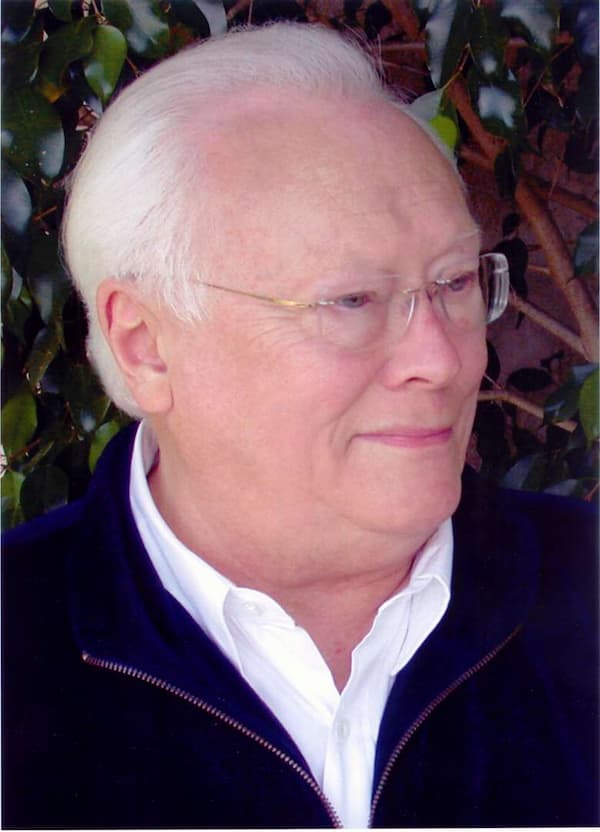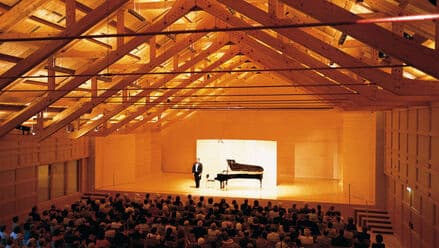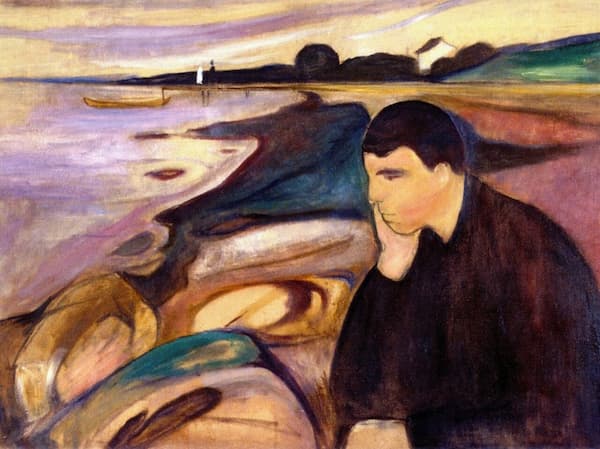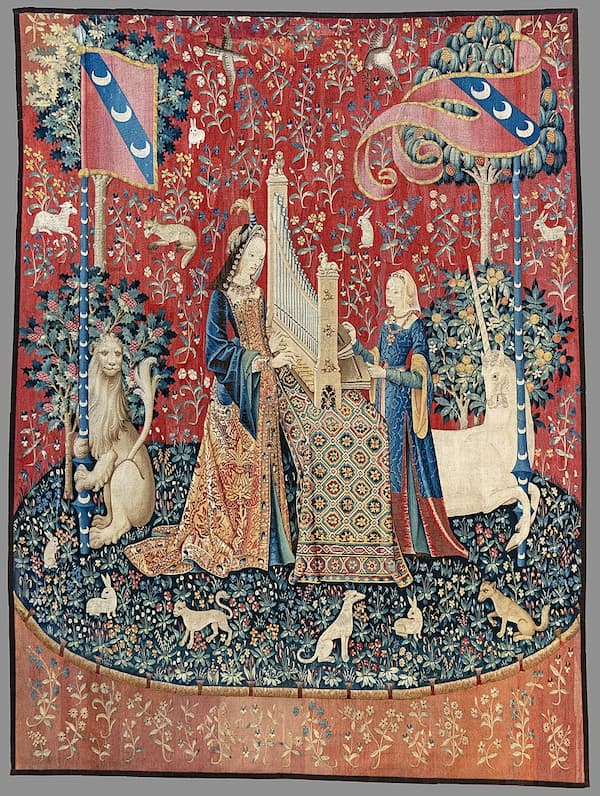Michael Daugherty: Brooklyn Bridge
American composer Michael Daugherty was inspired by one of the great constructions of New York City to create his work for clarinet and orchestra. Brooklyn Bridge (2005) is a musical view of the bridge from the four cardinal directions, i.e., ‘I. East (Brooklyn and Brooklyn Heights); II. South (Statue of Liberty); III. West (Wall Street and the lower Manhattan skyline, which was once dominated by the World Trade Towers); IV. North (Empire State Building, Chrysler Building, and Rockefeller Center)’.

Brooklyn Bridge from Brooklyn Heights
East takes us across the East River to Brooklyn Heights. First settled in the middle of the 17th century, Brooklyn Heights rose to prominence in 1834 and has continued to be a popular part of New York City. It was from Brooklyn Heights that civil engineer John A. Roebling (1806–1869) and his son, Washington Roebling (1837–1926), placed one footing of the proposed New York and Brooklyn Bridge (later shortened to simply the Brooklyn Bridge). The basic problem with constructing a bridge across the East River was that the bridge had to be high enough for river traffic to pass underneath. Initially, the cross-river traffic was served by ferries, but Roebling’s design, with long approach viaducts on each side of the bridge to bring the traffic high enough for river traffic to pass underneath, was successful. Construction started on 2 January 1870, and the bridge opening ceremony was held on 24 May 1883.

The Brooklyn Bridge under construction, ca 1872–1887 (Brooklyn Museum)
When it opened, it was the world’s longest suspension bridge, with the deck 38.7m (127 f) above high water. Although it originally was designed for traffic of cars, elevated trains, street cars, and pedestrians, it now is only used for car traffic and foot traffic between Brooklyn Heights and Lower Manhattan.
In the East movement, we get expansive building gestures, the percussion of the workers on the bridge, and the movement of people, trains. and cars (and the occasional accident?) across the new structure. The bridge rises triumphantly, and the movement closes with what might be sunset (from the west) across the structure.
Michael Daugherty: Brooklyn Bridge – I. East (Maureen Hurd, clarinet; Rutgers Wind Ensemble; William Berz, cond.)
Below the bridge, the great bay of the city opens as both the East River and the Hudson River empty into Upper Bay. Seen from the Statue of Liberty, the Bridge links east and west, shadowed by the white cables of the Manhattan Bridge, which opened on 31 December 1909.
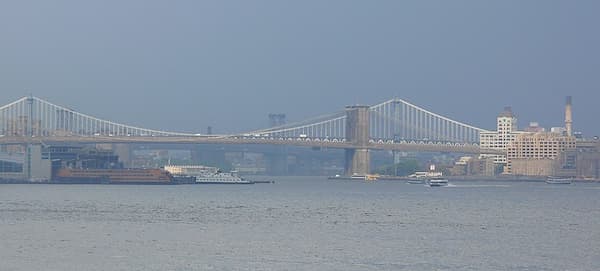
Brooklyn Bridge as seen from Statue of Liberty (photo by Ad Meskens)
The slow movement gives us a pensive view of the bridge. For immigrants coming to New York, they would pass Liberty Island on their way to the immigrant clearing station at Ellis Island. This was the point where momentous decisions needed to be made.
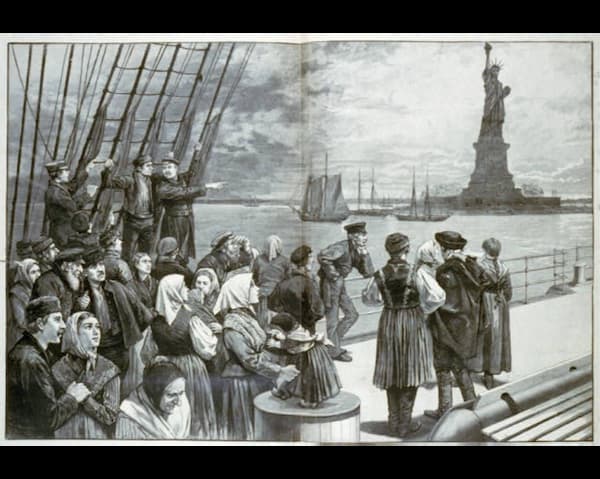
Immigrants passing the Statue of Liberty on the steamer ‘Germanic’, Frank Leslie’s illustrated newspaper, 1887, July 2, pp. 324-325
(Library of Congress, ppmsca 51996 //hdl.loc.gov/loc.pnp/ppmsca.51996)
For many, there would be no easy way back, and for others, there was nothing to go back to. Miss Liberty, or, in official parlance, The Statue of Liberty Enlightening the World, was dedicated in 1886 as a gift to the country from the people of France. Under her left foot, Liberty tramples a broken chain and shackle, representing the cessation of slavery after the Civil War (1860–1865). Her posture, with a torch held aloft in one hand and the other holding a table with the date of the U.S. Declaration of Independence, helped underscore her symbolism as an icon of freedom and was traditionally seen as a symbol of welcoming immigrants arriving by sea.
Michael Daugherty: Brooklyn Bridge – II. South (Maureen Hurd, clarinet; Rutgers Wind Ensemble; William Berz, cond.)
The view from the West is of the bridge rising from the financial district.
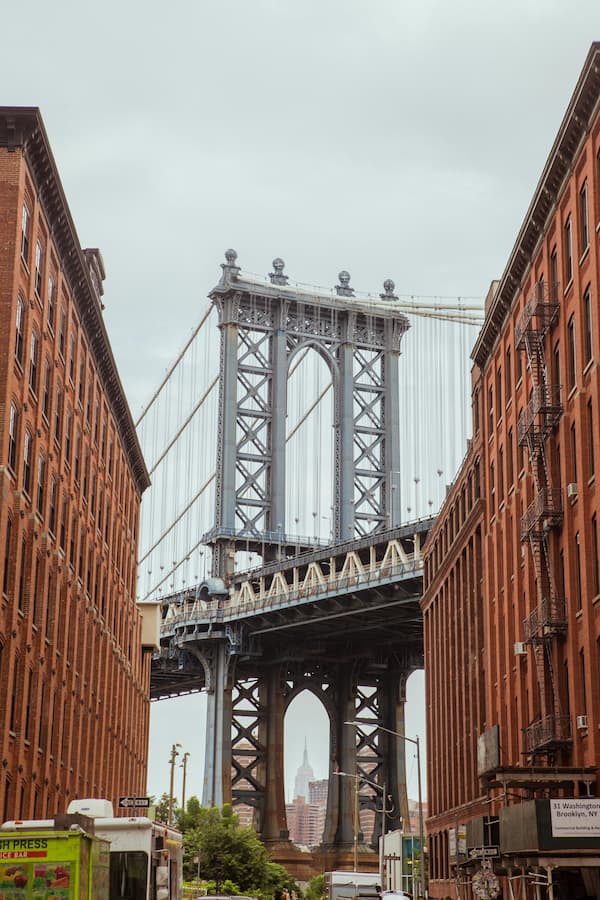
Brooklyn Bridge from the Financial District
The solo clarinet in this movement could represent so many things – the rise and fall of the stock market every second of the day (your investment may increase or decrease in value….) or the motion of people on the street.
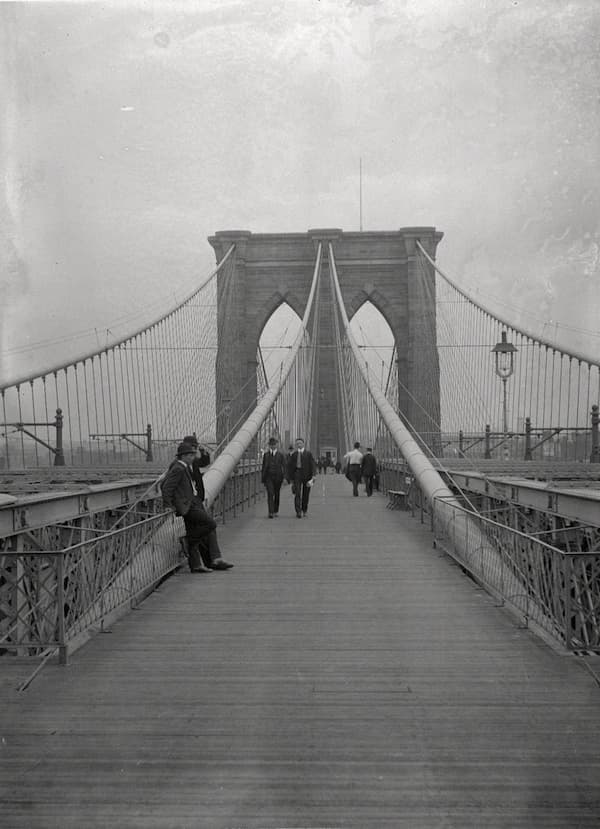
The Brooklyn Bridge looking East, 7 July 1899 (Brooklyn Museum)
It’s also a delicate dance of the movement of currency – a name given to money because it flows. The sad vein in the music comes from the memory of the Twin Towers, which fell on 11 September 2001. One of the famous pictures from that day showed the people streaming out of the Financial District across the Bridge to escape.
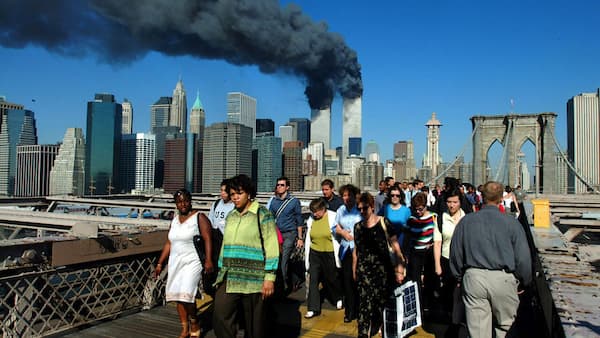
Looking West across the Brooklyn Bridge on 11 September 2001 as the Towers burn before they later collapsed (photo by Henny Ray Abrams)
Michael Daugherty: Brooklyn Bridge – III. West (Maureen Hurd, clarinet; Rutgers Wind Ensemble; William Berz, cond.)
Looking down lower Manhattan from the north and the heights of the Empire State Building, the Bridge seems small in the background.
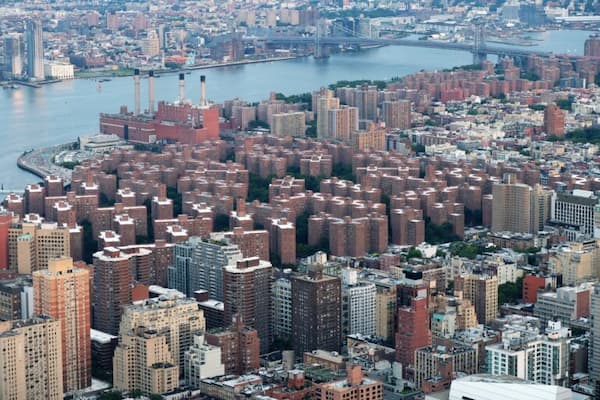
Brooklyn Bridge from the Empire State Building (photo by Batnomad)
On the 65th floor, at the top of the Empire State Building, is the fabled Rainbow Room, which opened on 14 September 1934. From the beginning, there was always space for bands to play and a stage for entertainers. The composer imagines this last movement as being played by ‘Artie Shaw, the great jazz swing clarinettist of the 1940s, performing with his orchestra…’.
Michael Daugherty: Brooklyn Bridge – IV. North (Maureen Hurd, clarinet; Rutgers Wind Ensemble; William Berz, cond.)
Daugherty’s work is an interesting look at a monumental work from all directions. Everyone in New York has their own view of the bridge – from underneath on the Brooklyn side, down the length of the city from uptown, and so on. Its stone towers are unique in the bridges of New York – all other New York bridges have metal towers to save weight and money. The opening of the bridge was famous for its fireworks, and on its 100th birthday, an equally momentous fireworks display marked its celebration.
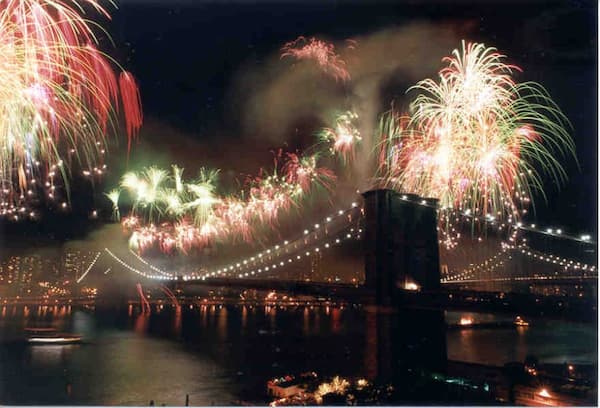
The Brooklyn Bridge Centennial Celebration, 1983 (Photo by Fireworks by Grucci)
It’s difficult to put words to something as monumental as a bridge. It’s even more difficult to put the ineffable into music. Daugherty has used the techniques of the symphony to create a work that reflects all the different ways New Yorkers (and visitors) look at something that’s been part of the skyline for nearly 150 years. Every angle gives a new vista and a new look back in time. Daugherty takes us back to the founding of the bridge in the 19th century, jumps ahead to the action of the big bands in the 20th century, and then to the 21st century and the solemnity of the sorrows of 2001. Monumental, like the bridge!
For more of the best in classical music, sign up for our E-Newsletter

